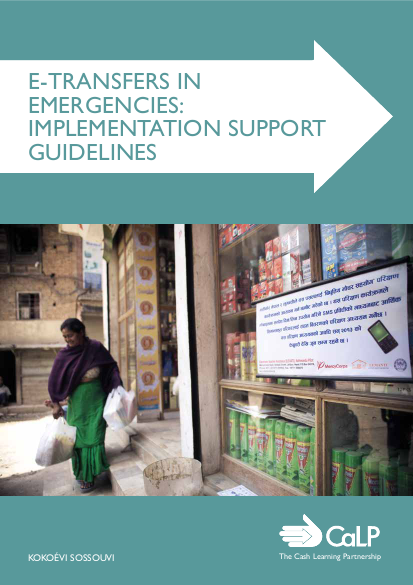
Globally, cash payments to poor people, be they from governments, aid agencies or the private sector are in the order of magnitude of billions according to the Better than Cash Alliance.1 Meanwhile, the rapid spread of technologies enabling branchless banking and digital payment systems has supported the increased consideration of electronic transfers by aid agencies. Over the last five years alone, the CaLP Cash Atlas recorded 41 electronic transfer programmes worldwide targeted at over 3.3 million beneficiaries in emergency settings.2 Electronic transfers, or e-transfers, are a form of value transfer that relies on digital payment systems. The great many benefits they can realise for aid recipients and aid agencies alike in terms of increased security, convenience, privacy, speed, reduced operational/transaction costs and logistics, etc. have been widely documented.3 Equally, many aid agencies have experienced challenges in implementing e-transfers, including in relation to mobile network coverage and reliability, the presence of e-transfer agents, liquidity constraints and low education levels among beneficiaries. Learning from and responding to these challenges is essential.